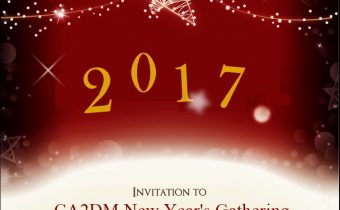Speaker: Prof. Yoo Won Jong
Affiliation: SKKU Advance Institute of Nano Technology (SAINT), Sungkyunkwan University
Abstract Details: Two dimensional (2D) materials are recently being investigated very intensively, with some of them holding great promise as semiconducting materials for future low power nano-electronics, as they present a range of achievable bandgaps and ultra-thin body with efficient electrostatic control. These properties, combined with mechanical flexibility, enable 2D materials to be very promising candidates that can meet major requirements for electronic and photonic devices operated in emerging future mobile and IoT environment.
However, formation of proper electrical contacts to nanoscale 2D materials (e.g. transition metal dichalcogenides: TMDs) is becoming a major challenge in realizing the desirable performance of the 2D material-based devices. According to recent studies, the observed two-terminal mobility in single-layer TMD devices is unexpectedly low [1], due to high contact resistance (Rc) induced between metal contact and TMDs. It is known that many 2D crystals are subjected to strong Fermi level pinning when they are in contact with metals, where the pinning is responsible for the observed high Schottky barrier height and high Rc. In this presentation, we address our findings on Schottky barrier heights at the interfaces [2] formed between molybdenum dichalcogenides and various metals such as Ti, Cr, Au, Pd. For MoS2 and MoTe2, via I – V characteristics for various temperatures.
Meanwhile, we explore the different metal-MoS2 contacts and investigate the charge carrier injection mechanisms and their transition across the interfacial barrier [3]. Low temperature measurements on MoS2 field effect transistor are carried out and Rc as the function of temperature is studied. As the result, the obvious transition from thermionic emission at high temperature to quantum mechanically tunneling of charge carriers at low temperature along the junction is observed. Furthermore, at a low temperature, the nature of the tunneling behavior is found dependent on I-V characteristics. Interestingly, direct tunneling at a low bias and Fowler-Nordheim tunneling at a high bias is realized for a Pd-MoS2 contact due to the effective barrier shape modulation by biasing. However, at the same bias conditions only direct tunneling is observed for a Cr-MoS2 contact.
Acknowledgments
This work was supported by the Global Research Laboratory (GRL) Program (2016K1A1A2912707) Â and Global Frontier R&D Program (2013M3A6B1078873) at the Center for Hybrid Interface Materials (HIM), both funded by the Ministry of Science, ICT&Future Planning via the National Research Foundation of Korea (NRF).
References:
[1] A. Allain, J. Kang, K. Banerjee and A. Kis, “Electrical contacts to two-dimensional semiconductorsâ€, Nat. Mater., 14, 1195 (2015)
[2] H.-M. Li, D.-Y. Lee, M. S. Choi, D. Qu, X. Liu, C.-H. Ra, and W. J. Yoo, “Metal semiconductor barrier modulation for high photoresponse in transition metal dichalcogenide field effect transistors†Sci. Rep., 4, 4041 (2014)
[3] F. Ahmed, M. S. Choi, X. Liu, and W. J. Yoo, “Carrier transport at the metal–MoS2 interface†Nanoscale, 7, 9222 (2015)
About the Speaker: Prof Won Jong Yoo
Deputy Director, SKKU Advanced Institute of Nano-Technology
Professor, Department of Nano Science and Technology, Sungkyunkwan University
2066 Seobu-ro, Jangan-gu, Suwon, Gyeonggi-do 440-746 Korea
(email) yoowj@skku.edu (Tel) 82-31-290-7468
Won Jong Yoo received his BS and MS degrees from Seoul National University in Korea. In 1993, he received his Ph.D. degree from Rensselaer Polytechnic Institute in USA in the area of the plasma etching properties of semiconductor materials. Before joining Sungkyunkwan University (SKKU) in 2006, he has been an associate professor with National University of Singapore (NUS) where he conducted his research on silicon devices and plasma processes. His main industrial experience was research and development in the areas of semiconductor material/device processes at Samsung Semiconductor Research Center, Korea. He has been leading the collaboration research between Samsung and SKKU for developing future graphene and 2D devices as the director of Samsung-SKKU Graphene Center. He is currently working as the deputy director of SAINT which is one of the leading nano science focused R&D institutions. The areas of his current research interests are the electronic and photonic application of 2D materials including graphene and transition metal dichalcogenides (TMD), the investigation of interfaces formed by using 2D materials, and the investigation of electrical transport occurring in 2D nano-structures. He has authored or co-authored about 200 journal and conference papers. He has organized a premier conference, Recent Progress in Graphene/2D Research (RPGR) in 2016.
Click HERE for directions
—
To view all the upcoming seminars, you can visit: https://graphene.nus.edu.sg/news-events/events/
You may also Like & Subscribe our following channels below to receive instant notifications for new announcements.


 Speaker: CA2DM
Speaker: CA2DM  Speaker: Dr. Vinicius Rosa, Assistant Professor
Speaker: Dr. Vinicius Rosa, Assistant Professor